On the 16th of February 1944 the first wave of Operation Hailstone strafed Chuuk Lagoon, raining death across the islands. American bombers quickly decimated the Japanese airstrips and destroyed dozens of aircraft while they were still on the ground. Over the next two days, an unyielding storm of bombs and torpedoes pounded the Japanese fleet day and night. Those that tried to escape the slaughter from the sky had to run a gauntlet of American warships positioned near Chuuk, just out of range of the islands' naval guns.
When the dust settled, more than 40 Japanese vessels had been destroyed and the islands were littered with the wreckage of nearly 300 Japanese aircraft. As well as losing thousands of soldiers in the attack, the Japanese forces on the islands of Chuuk were stranded with only limited supplies. They were effectively cut off from the rest of the war.
Read more about our dive on the Betty Bomber, one of these aircraft.
Diving The Wrecks Of Chuuk Lagoon
75 years later, thanks to Operation Hailstone, Chuuk Lagoon is regarded as the world's best wreck diving destination. The wrecks are covered in coral and swarming with colourful fish but still carry the wartime cargo that was on board when the attack started. Some of the Japanese sailors are still on board too.
Long Lance Torpedo, Heian Maru
The Heian Maru, ironically meaning 'peace', is the largest wreck in Chuuk Lagoon. Formerly a luxury cruise liner, it was re-purposed as a submarine tender, carrying all the spare parts and consumables that the submarines might need. As well as these formidable long lance torpedoes, we saw a stack of spare periscopes and a hold full of submarine batteries on this wreck.
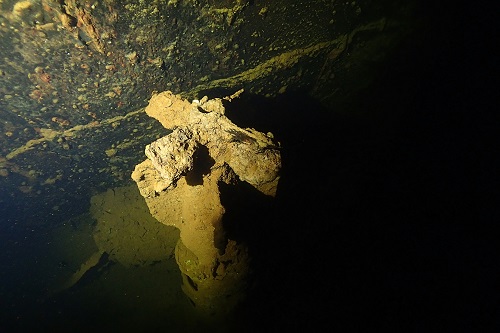
Batfish, Shinkoku Maru
We descended down to the Shinkoku Maru through armies of fusiliers wheeling and darting around the superstructures. At deck level, these were replaced by schools of batfish that patrolled the wreck.
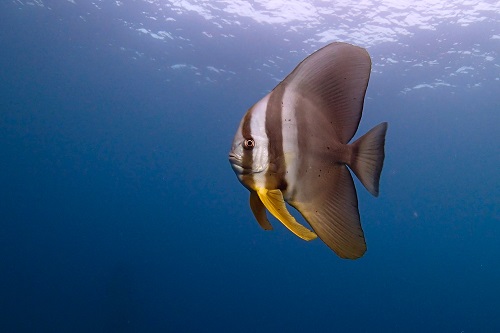
Ascending from our last dive each evening, we were somewhat perturbed to spot grey reef sharks hungrily circling us. We soon found out why. As the last diver climbed aboard, the kitchen scraps from that day were emptied off the back of our liveaboard. The water erupted with sharks thrashing, snapping up everything from meaty bones to strips of orange peel.
Shells, Yamagiri Maru
Shortly before Operation Hailstone began, the Japanese caught wind of the impending attack. Many of their more valuable battleships were relocated, leaving the cargo ships to bear the brunt of the damage. Among the battleships that left were the Yamato and Musashi, the only boats capable of firing these massive 18.1 inch shells.
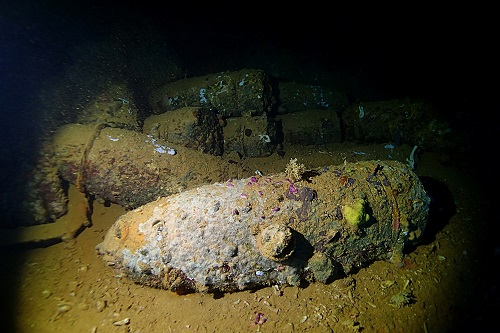
Sick Bay, Shinkoku Maru
Cruising through the sick bay on the Shinkoku Maru, we came across an autoclave, medicine bottles and a collection of silty glass syringes. A stack of human bones was neatly piled on the surgeon's table. We know that all of the deaths occurred in another part of the ship so someone has moved the bones for a macabre photo opportunity.
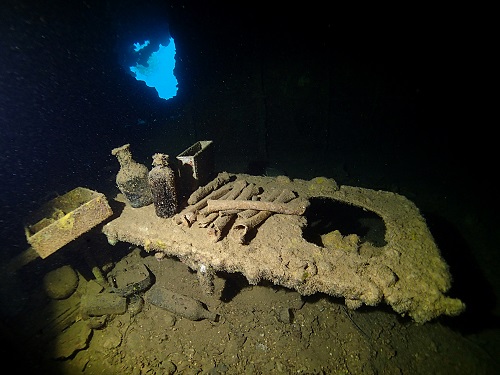
Sponges & Corals, Hoki Maru
The wrecks of Chuuk Lagoon form artificial reefs now encrusted in corals and sponges and teeming with tropical marine life. On each ascent from the Hoki Maru, we followed the masts and derricks that stretched towards the surface. Tiny fish darted around the soft corals and vase sponges keeping us entertained during our deco stops.

Artillery, Nippo Maru
In addition to these artillery guns, the Nippo Maru was laden with ammunition, gas masks, rations and even a tank. These vital supplies were intended to support the Japanese forces stationed on the Pacific islands.
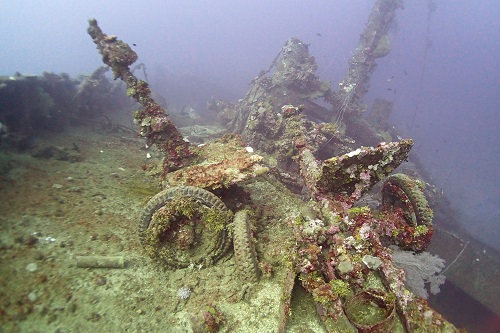
Cup Corals, Shinkoku Maru
During the day, we barely noticed the cup corals on the wrecks of Chuuk Lagoon. They remained closed and were distinctly unremarkable. After dark however, they bloomed vibrant yellow bringing new life to the decaying metal.
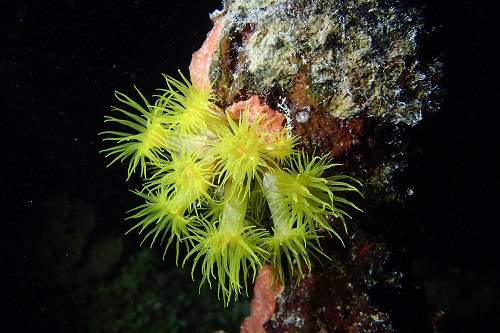
Skull, Yamagiri Maru
Deep in the engine room of the Yamagiri Maru, we looked up and found this skull staring back at us. The powerful explosion that took the life of this crewman embedded his remains in the wreck. Although some human remains have been recovered from the wrecks of Chuuk Lagoon, others have been left in their final resting place.
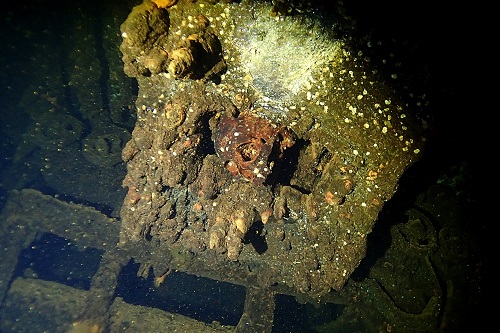
Medical Box, Shinkoku Maru
Diving on the Shinkoku Maru, we kept coming across small collections of artefacts laid out on the deck and superstructure. The local dive guides carefully curate these exhibits. This medical box was filled with bottles and bowls and the writing embossed on the lid was still visible.

Diving The Wrecks Of Chuuk Lagoon
Human remains can be found throughout these eerie war graves and should all be treated with respect. Moving bones around is frowned upon.
The numerous artefacts are a big part of the appeal of diving in Chuuk Lagoon. Taking souvenirs is strictly forbidden and all luggage is searched at the airport before departure.
How To Get To Chuuk Lagoon
Flights to Chuuk are very limited and only operate around 3 times a week.
1. Fly to Tokyo, Osaka, Seoul or Manila.
2. Take a United Airlines flight to Guam and from there on to Chuuk.
Many thanks to the Odyssey liveaboard for their kind hospitality. The level of service on board was exceptional and the rooms were larger than the average hotel room. Captain Mike's in-depth knowledge of the wrecks and his detailed videos made the dive briefings really special too.
